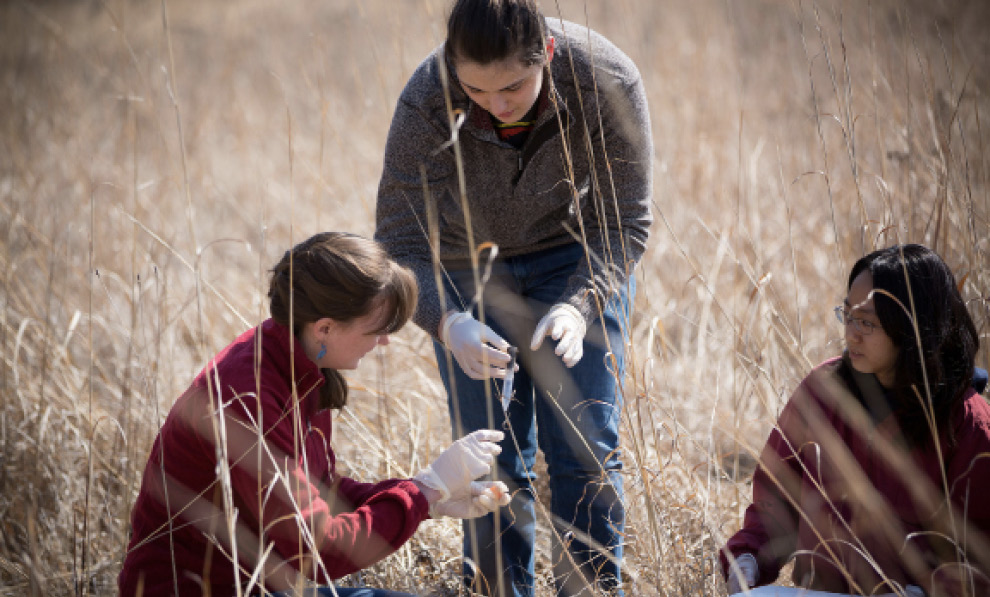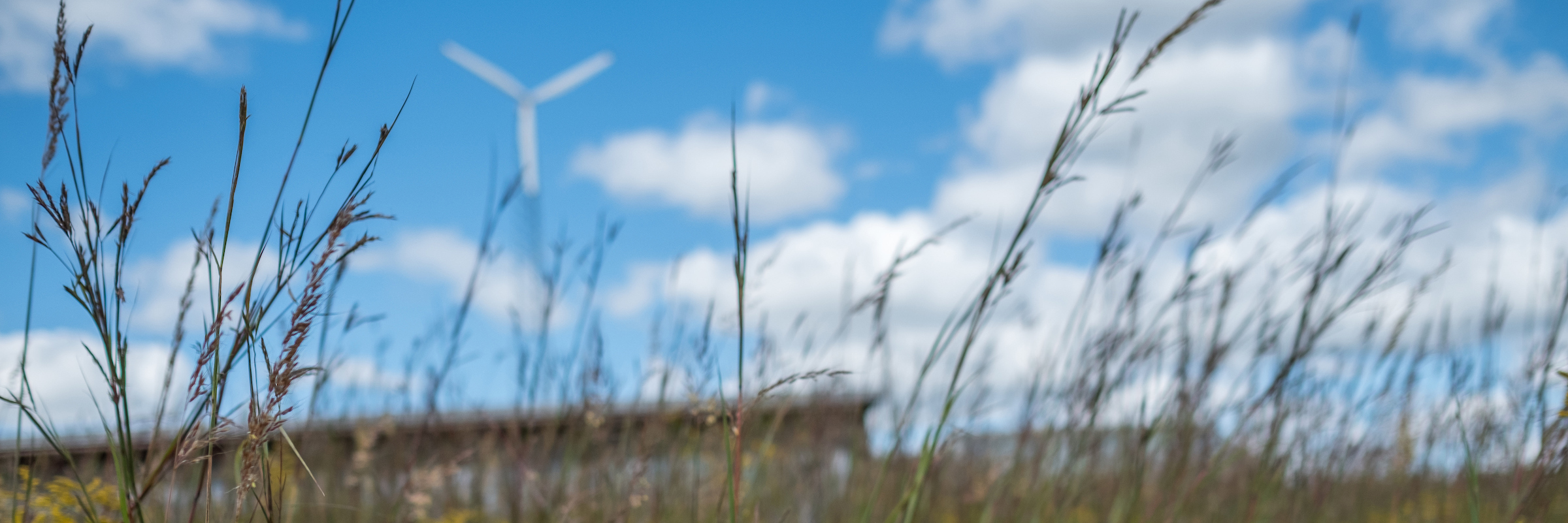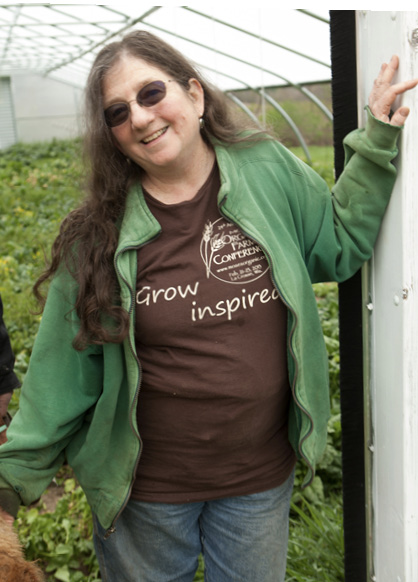With growing interest in providing habitat for pollinators and a concern over the loss of native plants in our landscape, many landowners want to transform fallow or savannah land from non-native or single species grasslands to diverse native grasses and flowering plants—ultimately restoring native prairies. Because native prairie grasses and flowering forb plants have very small seeds, the planting area needs to be bare to ensure good seed-to-soil contact. Most prairie planting recommendations encourage the use of herbicide in preparing this seed bed.
As organic farmers, my husband and I did not want to either handle or hire someone to apply these prohibited substances, so we tried a different way. Eight years after we planted our one-acre, we can say that we created a successful prairie planting without any herbicide use. Three and a half years ago, we planted 22 acres of CRP land with a grass/flowering plant prairie mix, without broad herbicide use, and things are going well there, too.
Prairies can successfully be established in a variety of areas that receive full sunlight, either on flat or sloping land, and on any type of soil. Farmers may want to plant a flowering field border to provide habitat for beneficial insects in the buffer zone between their own organic fields and the neighboring conventional fields, gaining benefit from land where they cannot grow organic commercial crops. The Natural Resources Conservation Service has a variety of cost share opportunities— such as the Environmental Quality Incentives Program (EQIP) and the Conservation Stewardship Program (CSP)—to aid farmers with these plantings.
The first step is to assess the area where you plan to plant your prairie and your capabilities to prepare and plant it. If the existing plant community is acceptable, but you wish to improve the diversity of plants and add specific flowering plants such as milkweed for monarch butterflies or fall asters to provide late-season forage for honeybees, then “frost interseeding” can work. Broadcast seed in very late fall before snow, during the winter if the ground is not snow covered, or in the very early spring when just a small amount of snow is on the ground and melting quickly. This should be done on ground that was burned or mowed short in the fall, or raked in areas to expose soil so those seeds can touch moist soil.
Consider this interseeding technique especially in areas where tractors cannot be used and on small patches of ground. This frost seeding will allow much of the current vegetative cover to remain, but some mowing in the early years in mid-summer and controlled burning every five to seven years will eventually favor your native plantings.
Learn your soil type, as certain grasses and flowering plants will do better in dry, wet, clay, sand or silt soils. It is more ecologically beneficial and helps you achieve more success with your planting when you use a great diversity of seed. Depending on the seasons, each year different plants will flower, and the diversity will give you a better chance of having a strong stand of preferred plant communities. Native seed is expensive, so planning for success is important.
For larger tracts of land where undesirable plant communities are present, and on which you can use a tractor, use cover crops, tillage and mowing—that’s what we used on our land. You will need to either broadcast the seeds and pack them down or use a drop seeder drill, such as a Brillion with a roller, to get good seed-to-soil contact.
If you have persistent weeds such as perennial (Canadian) thistle, you may need a few years to deal with them before you can plant your native plants. One method for controlling thistle that I have found effective in fields (not untilled pastures), is to plant sorghum sudan grass in the spring into tilled soil and continually mow it, up to three or four times in the season when it gets to about two feet tall. You don’t want the sudan to get too tall, or else it will smother itself when you mow it. You can harvest it for forage, or just leave it in the field, depending on how much thistle there is. Using this method, the thistle grows with the sudan, and fights for light in the thick and fast-growing stand. Each time you mow, the thistle has to start all over again, and since it is somewhat smothered by the sudan, it is using up and weakening its roots rather than gaining nutrients from the soil or sun. By cutting it numerous times, you continually weaken the root. After one season, I have seen a 75 percent drop in the thistle present; after two years of doing this, we were able to get rid of just about all of the thistle. You could also just mow each time the thistle starts to flower the first year and do the sudan grass treatment the second year, to save you two years of tillage. If you only have a few thistles, you can dig up the roots. Continual tillage only cuts up the roots and makes more plants, not less.
Using tillage
In a situation where most of the vegetation can be set back with tillage, unlike thistle, you can get your field ready for planting using the following method: mow in midsummer, which prevents the current crop of plants from dropping seed and knocks back any small shrubs. Then field cultivate, disc or use whatever tillage you want to prepare a seed bed and plant winter rye. This is between mid-August and mid-September for southern Wisconsin; you should adjust this timing for your region. Field cultivating works especially well for controlling quack grass, if you remember to let those quack grass roots dry out in the sun. The following spring, till in the rye when it is less than a foot tall. This will be sometime in May—earlier if an early spring, later if a late spring. Then plant a thick stand of oats. Let this grow until late June and then till it in. Drill soybeans in early to mid-July—yes, I said soybeans. Drill them thick and they will come up very quickly in the warm soil (hopefully, you will have enough moisture), and will canopy over the tight rows. We had very little growth of grasses or broadleaves under our soybeans. We have done this numerous times for fall vegetable production and have had success in controlling weeds with the use of July-planted soybeans. If we are following with vegetables, we would mow off the beans and till in August. For the native prairie, we let the soybeans go until the end of September and mowed them then. The thick canopy provided excellent weed control for us and left us with a firm seed bed, mostly free of weeds. We did not do any further tillage after the soybeans before we planted the prairie. We then planted our prairie seed using a broadcast seeder and went over the field with a cultipacker in late October. It snowed the following week—perfect timing.
The first year, we mowed twice, when the plants were about 14-18 inches tall. The second year, we hand-pulled some problem weeds in our one acre. We did a prescribed burn, with a good firebreak around the acre, and good planning to prevent the fire from going beyond borders. A rule of thumb is that spring burns favor native grasses and fall burns favor native flowering plants, or forbs. Since we are managing our prairie for our own honeybees, native pollinators and butterflies, we favor the flowering forbs. Our prairie has a diverse stand of native grasses, too, which hold soil and are very beautiful as well.
Professionals typically recommend the use of herbicides to achieve the weed-free, firm seedbed that is required to plant your native seeds. Any method that lessens the weed seed bank, lessens the number of weeds growing in the top inch or two of soil, and does not disturb the soil to bring up new weed seeds, could be used to successfully plant native grassland species. Experiment with various techniques on small areas to familiarize yourself with the timing of seeding and mowing for your soil type and climate, and then move to larger acreages. You will be rewarded for your work and stewardship with the environmental stability a permanent sod cover provides: diverse wildlife habitat and the blissful beauty of a prairie with different blooming plants throughout the growing season.

Grinnell College students analyzing soil chemstry at the Conard Environmental Research Area (CERA). Photograph by Jun Taek Lee


